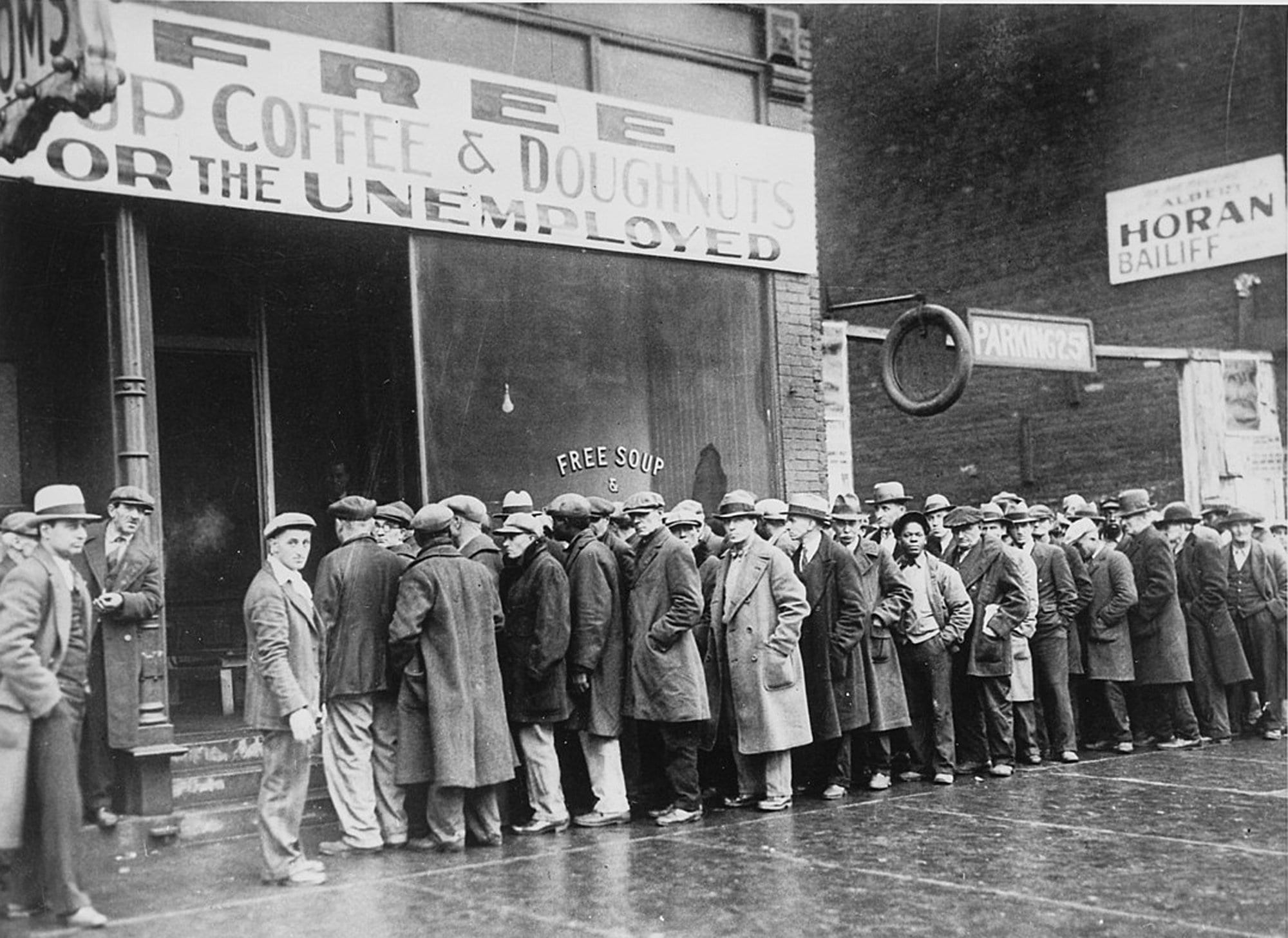
Dustbowl Unemployed: Men queued outside a depression soup kitchen in 1931. (Photo: National Archives)
The news today is full of doom and gloom. Iraq, climate change, budget deficits, wildfires, North Korea, and drug abuse are only a few of the serious topics that fill broadcast and print media. Some say that America is in big trouble and in the worst times that we’ve ever been. I usually reply that things could always get worse. In fact, things have been worse in the past.
Consider our country one hundred years ago when we were in serious turmoil. Social upheaval prevailed. The women’s suffrage movement culminated in the 19th Amendment, which was sent to the states for ratification in June 1919. The American Temperance Movement also reached a peak when the 18th Amendment outlawing all alcohol in the United States was ratified in January 1919. Violent criminal gangs soon started fighting for control of the beer and liquor supplies.
Domestic terrorism was prevalent. On Oct. 1, 1910, a disgruntled steel worker used 16 sticks of dynamite to blow up the Los Angeles Times building, killing 21 and injuring dozens. One entire wing of the building was reduced to rubble.
Across the nation, steel workers blew up 110 iron works between 1906 and 1911. On July 22, 1916, a suitcase bomb exploded during the San Francisco Preparedness Day Parade killing 10 and wounding more than 40.
Labor strikes erupted across the country. A nation-wide steel workers strike began on Sept. 22, 1919, and collapsed on Jan. 8, 1920. The use of state-sponsored violence against union members was widespread. State militia violence was so bad that the U.S. Army was forced to occupy the town of Gary, Indiana.
Foreign terrorism was also prevalent. On July 30, 1916, the United States suffered one of the largest ever disasters in our history — The Black Tom Explosion in New York — when German agents sabotaged over a ton of munitions bound for the war in Europe. The explosion incinerated $20 million worth of military goods, killed 6, destroyed the pier, and even damaged the Statue of Liberty. The explosion was the equivalent of an earthquake measuring between 5.0 and 5.5 on the Richter scale. It was felt as far away as Philadelphia.
World War I was raging in Europe. In preparation, Congress passed the Selective Service Act on May 18, 1917 and America drafted 2.8 million men to fight in World War I. By summer 1918, we were shipping another 10,000 fresh American troops to France every day. World War I was horrendous. Nine million combatants and seven million civilians died as a direct result of hostilities.
Congress rushed into action as America entered the war in Europe. In June 1917, legislators passed the Espionage Act which made any interference with the Armed Forces a crime. In 1918, Congress expanded this with the Sedition Act to include any speech or expression of any opinion critical to our government or to the war effort a crime. In October 1918, Congress passed the Immigration Act, which mandated deportation of any non-citizens who disbelieved or were opposed to organized government — specifically anarchists.
In retaliation, anarchists began bombing government and law enforcement officials in the Spring of 1919. In April, an alert postal clerk discovered 36 dynamite filled bomb packages addressed to prominent politicians and businessmen. One was addressed to the United States Attorney General. On June 2, a suicide bomber blew himself up at the attorney general’s residence in Washington D.C. Eight more bombs detonated on the same day in seven different American cities targeting government officials across the nation.
On Dec. 21, 1919, the FBI rounded up and deported to Russia aboard a U.S. Navy vessel 249 of the most vocal anarchists, solely because of their political beliefs. That did little to quell anarchy. On Sept. 16, 1920, a massive blast shook Wall Street at noon. A wagon with 100 pounds of dynamite and 500 pounds of lead shot exploded killing 38 people and injuring 143. The blast was so intense that shrapnel penetrated the 34th floor of the nearby Equitable building.
Worst of all, a massive influenza epidemic raged around the world in 1918, largely because of World War I. The “Spanish Flu” infected 500 million people (one third of the world’s population) and killed over 50 million. In the United States, the Spanish flu killed 675,000 people — 6 times the number of Americans who died fighting in World War I.
My take on all this is, as bad as things are, we are better off now than Americans were in 1910-1920. And what did their children have to look forward to? The Great Depression of 1929-1939 with rampant poverty and 25% unemployment. As I said, things could always get worse.












